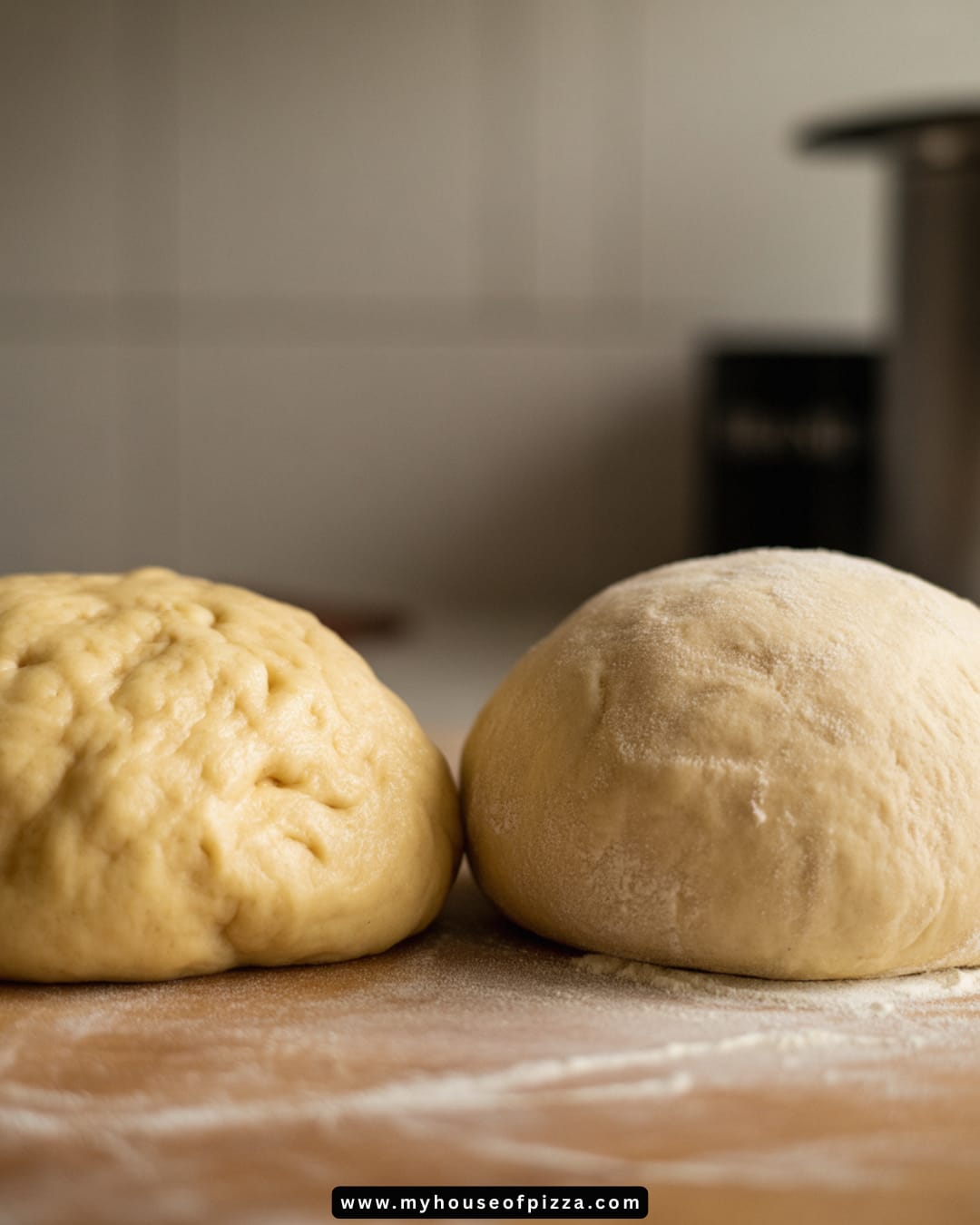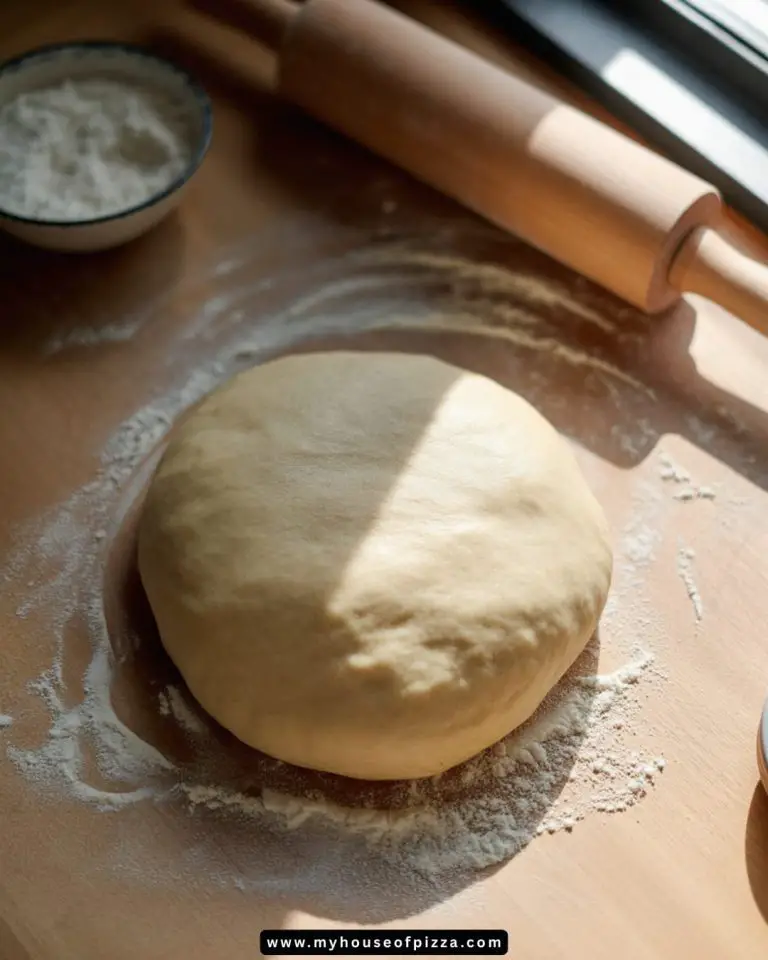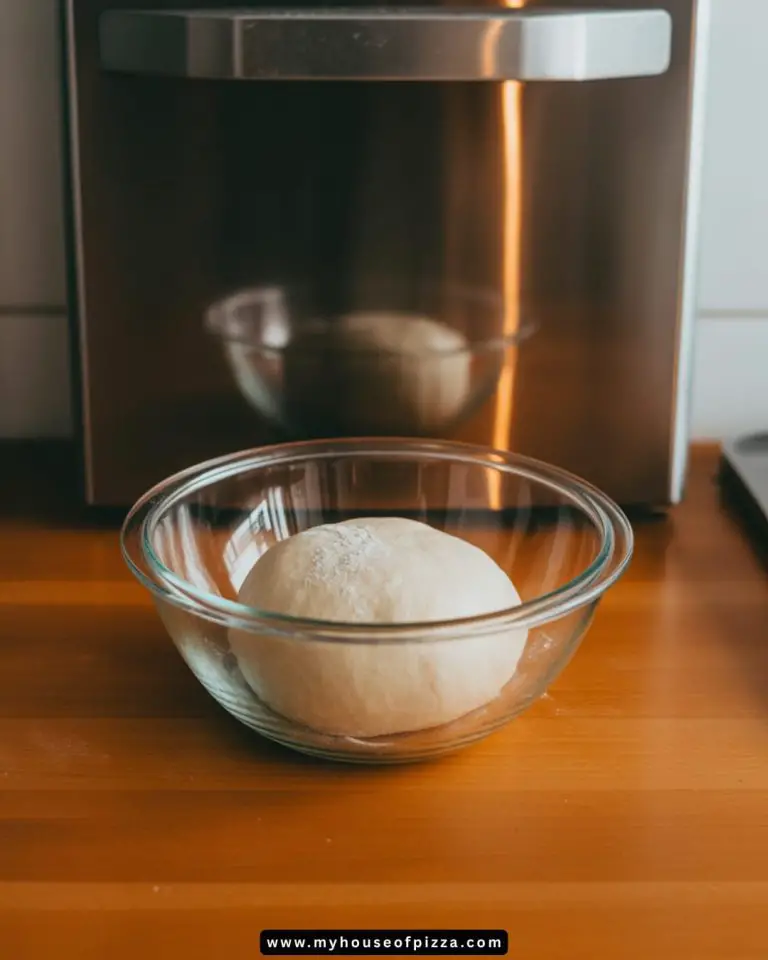Bread vs 00 Flour for Pizza Dough
So you’re standing in the baking aisle, staring at the flour section, and you start to wonder: Does it really matter if you use bread flour or 00 flour for pizza dough? You just want pizza with a crust that’s crisp but chewy, with those big bubbles you see at your favorite pizzeria.
Here’s the thing: the flour you choose really does change your dough. But the good news is, both bread flour and 00 flour can make great pizza. The trick is understanding how each one behaves, and what kind of pizza experience you want at home.
What’s the Big Difference Between Bread Flour and 00 Flour?
Let’s start with the basics. Bread flour and 00 flour aren’t just different because of the name on the bag. Bread flour is usually made from hard wheat and has a coarser grind. It’s known for its higher protein content, which helps create strong gluten. This is why it’s the go-to for chewy, airy loaves.
00 flour, on the other hand, is all about that super fine, powdery texture. The “00” doesn’t mean it has a certain protein level. It’s actually a rating for how finely the flour is ground. Some 00 flours are made for pasta, some for pizza, and their protein content can be just as high as bread flour. What makes 00 flour special is how it absorbs water and stretches when you’re working the dough.
So, it’s not just about protein. The grind size makes a big difference in how your dough feels and bakes.
How Do These Flours Act in Pizza Dough?
When you mix up a batch of dough, the type of flour you use shows its true colors. Bread flour, with its coarser grind, soaks up water differently than 00 flour. If you use the same amount of water for both, you’ll notice the 00 flour dough is much wetter and stickier.
This runnier dough does something cool: it lets you stretch the dough super thin without tearing. That’s why Neapolitan pizza, with its big, puffy crust bubbles (called the cornicione), is usually made with 00 flour. The fine grind also helps the crust bake up crisp on the outside but soft and chewy inside.
Bread flour dough, being drier, is easier to handle for beginners. It gives you a more rustic, bread-like crust—think of those deep, yeasty flavors and a crunchier bite. If you love a pizza that almost tastes like fresh-baked bread, bread flour might be your pick.

Crust Texture and Flavor: What Should You Expect?
Here’s where things get personal. If you want a pizza crust that’s light, with a delicate crispness and big bubbles, 00 flour is your friend. The fine grind lets the dough stretch more, so you get that classic Neapolitan look and feel.
But if you’re after a heartier, chewier crust that feels a bit more rustic, bread flour shines. The higher protein and coarser grind create a stronger gluten network, which means more chew and a satisfying, bread-like flavor.
Both flours can give you a great crust, but the eating experience is different. Some people even mix the two to get the best of both worlds.
Comparing Protein, Texture, and Hydration
Let’s break it down with some real numbers and facts. This table shows how bread flour and 00 flour stack up, along with some common European flour types you might see in recipes or at specialty stores.
| Flour Type | Typical Protein % | Grind Size | Hydration (for similar dough feel) | Crust Texture | Best For |
|---|---|---|---|---|---|
| 00 Flour (Pizza) | 11-13% | Very Fine | Higher needed (dough is runnier) | Crispy outside, chewy inside, big bubbles | Neapolitan, thin crust |
| Bread Flour | 12-14% | Coarse | Lower needed (dough is drier) | Chewy, hearty, yeasty, artisan-like | New York, rustic style |
| Type 405 (EU) | 8-10% | Fine | Lower hydration | Soft, light, tender | Softer, lighter doughs |
| Type 550 (EU/AP) | 10-12% | Medium | Medium hydration | Balanced, moderate chew | All-purpose pizza |
If you try to swap bread flour for 00 flour in a pizza recipe, you might need to adjust the water. Otherwise, the dough could turn out too dry or too sticky.
What About Handling and Shaping the Dough?
This is where a lot of home bakers get tripped up. 00 flour dough, because it’s wetter, can feel tricky to work with at first. It likes to stick to your hands and the counter. But that stickiness is what helps you shape the dough super thin without holes.
Bread flour dough is stiffer and easier to pick up and move around. If you’re new to stretching pizza dough, bread flour might give you more confidence. You’ll get a thicker, chewier base, and it’s less likely to tear.
If you want to mimic a wood-fired pizzeria at home, try using 00 flour and practice stretching by hand. If you prefer a classic, hearty crust, bread flour is forgiving and still gives you a fantastic pizza.
Regional Styles and Flour Choices
In Italy and across Europe, flour types are labeled by numbers that hint at their grind and ash content. 00 flour is prized for pizza in Naples, but you’ll find other types like Type 405 and Type 550 in Germany and France.
Type 405 is close to 00 flour and makes a tender, lighter dough. Type 550 is more like all-purpose, good for a range of pizza styles. These differences matter if you’re following European recipes or want to experiment with different textures.
Which Should You Use at Home?
The honest answer: Both bread flour and 00 flour can make amazing pizza. If you’re craving a Neapolitan-style pie with a soft, bubbly crust, go for 00 flour and use a high hydration recipe. If you like a more classic, chewy crust that stands up to lots of toppings, bread flour is a solid choice.
Don’t be afraid to experiment. Try both flours, or even a blend. Adjust your water until the dough feels right. The best pizza is the one you love to eat, made in your own kitchen.








